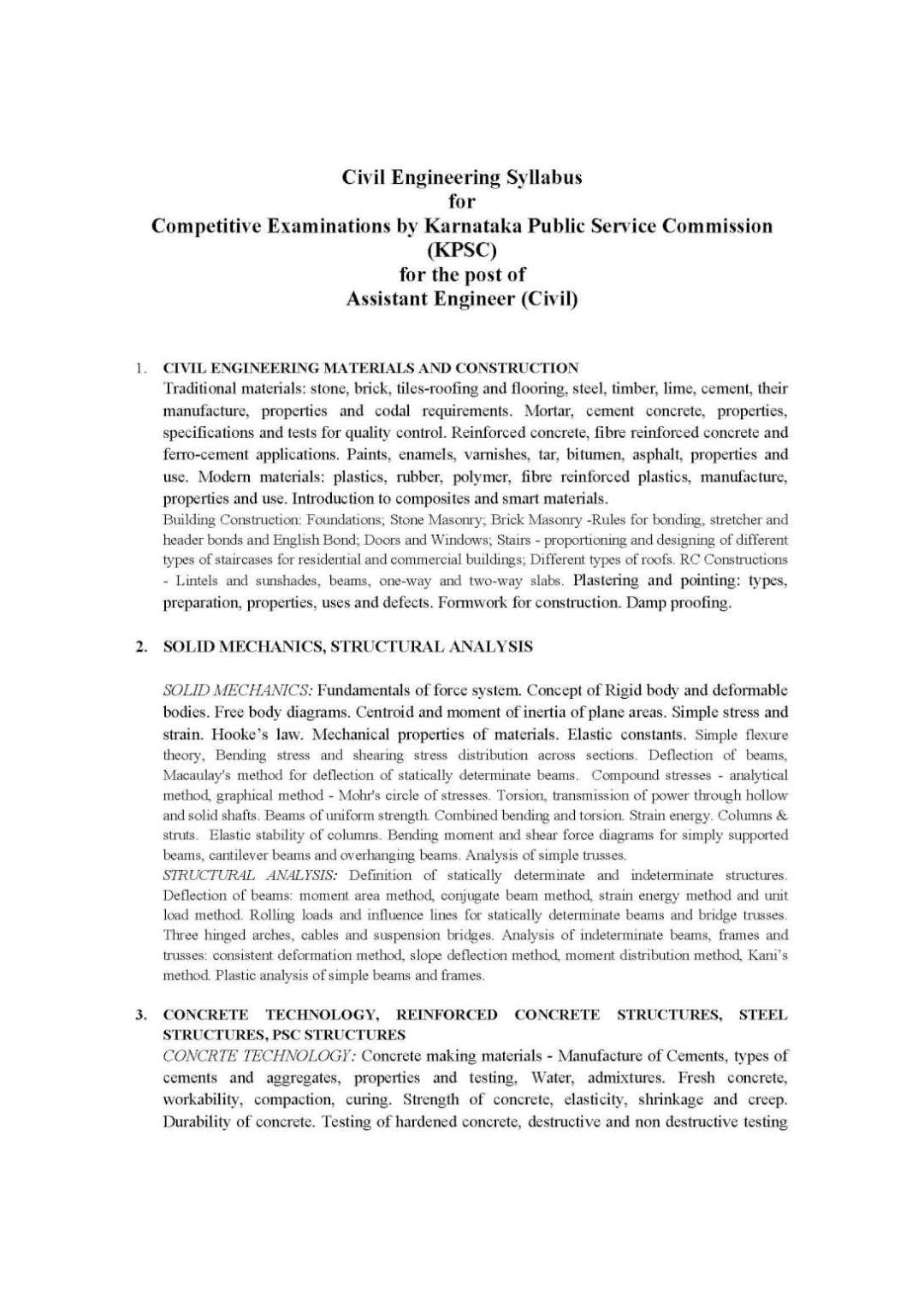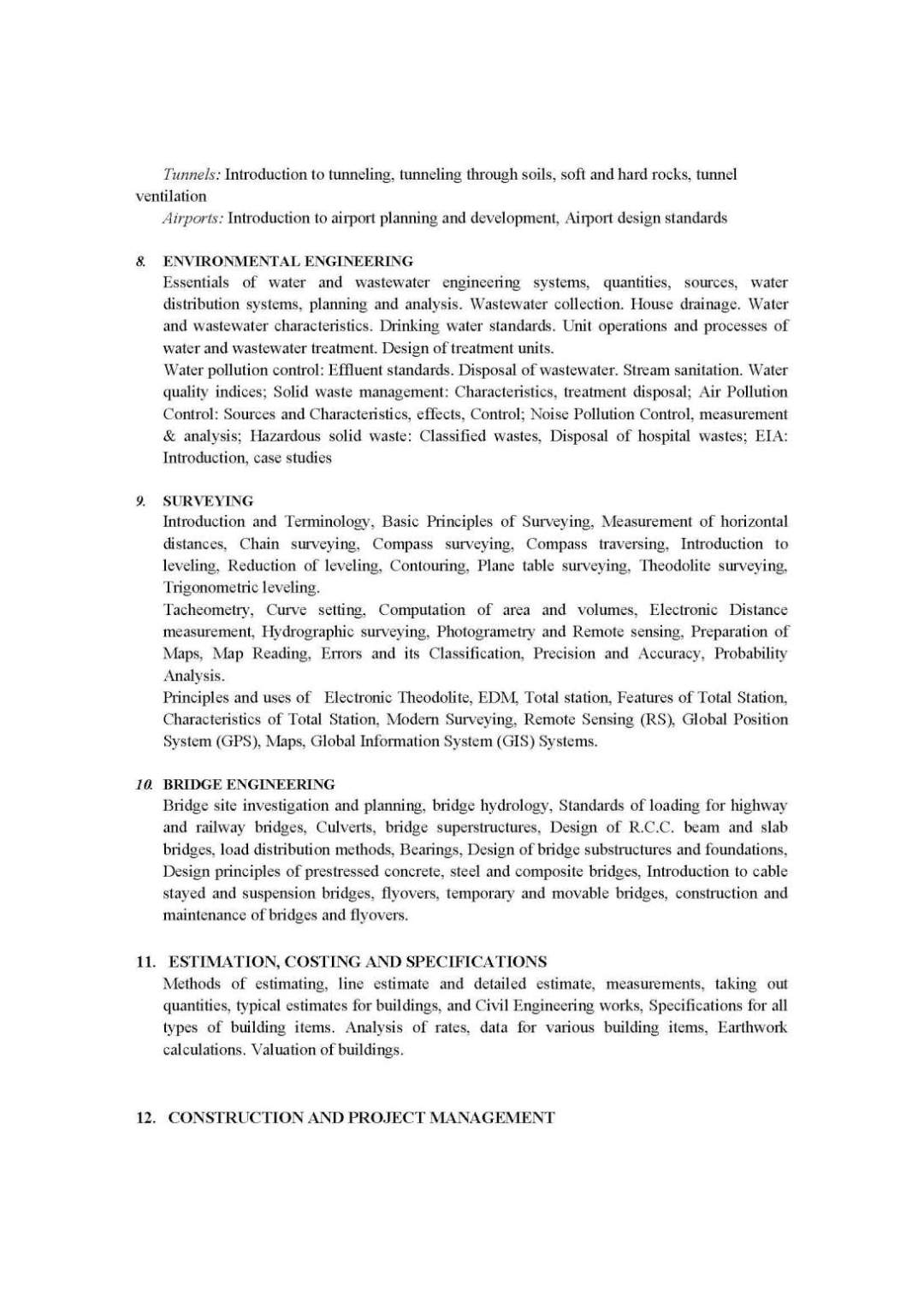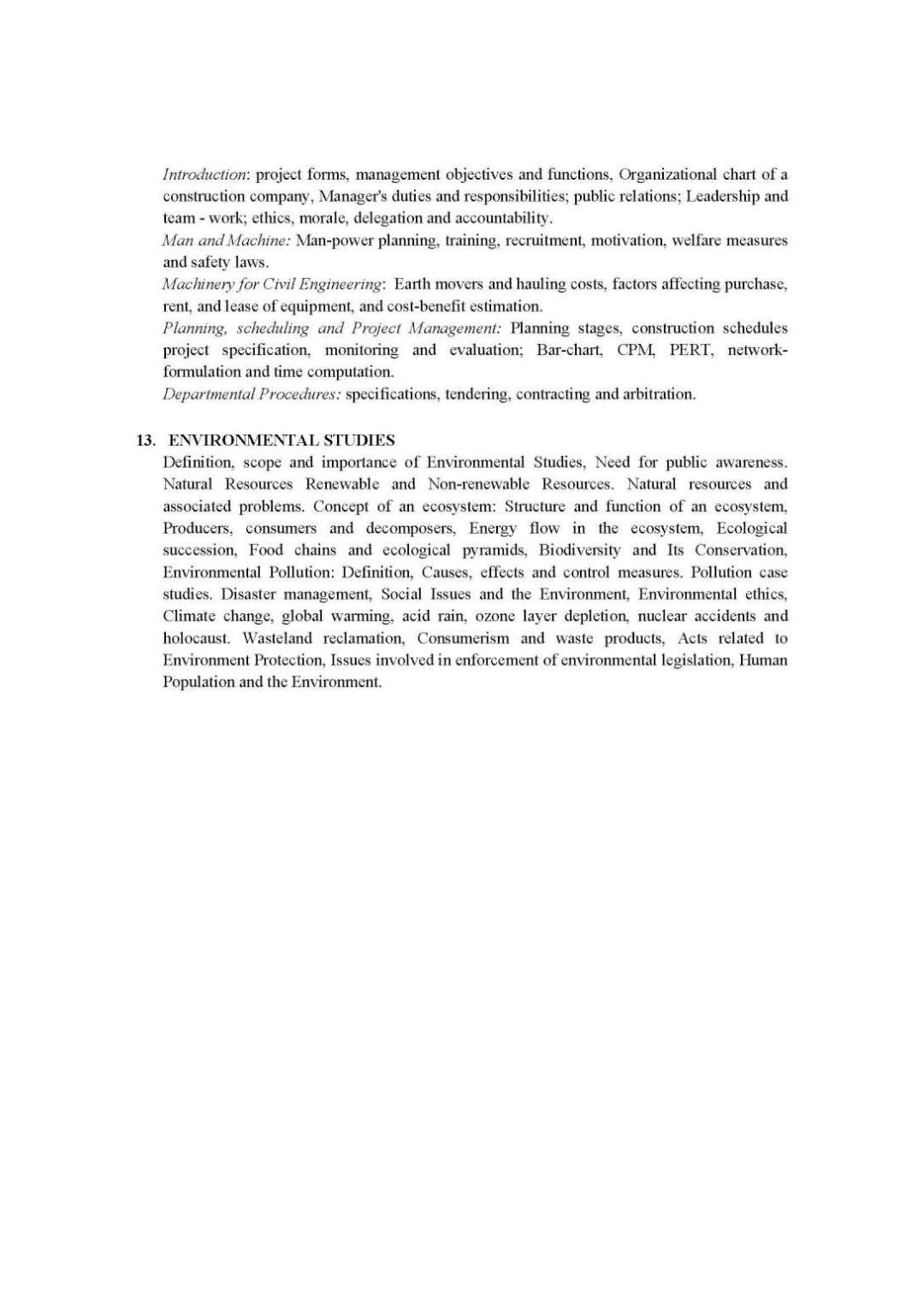|
#2
7th November 2015, 11:24 AM
| |||
| |||
| Re: KPSC AE Syllabus
As you are searching for syllabus of Assistant Engineer Exam conducts by KPSC, so here I am providing detailed syllabus: KPSC Assistant Engineer Exam Syllabus CIVIL ENGINEERING MATERIALS AND CONSTRUCTION Traditional materials: stone, brick, tiles-roofing and flooring, steel, timber, lime, cement, their manufacture, properties and codal requirements. Mortar, cement concrete, properties, specifications and tests for quality control. Reinforced concrete, fibre reinforced concrete and ferro-cement applications. Paints, enamels, varnishes, tar, bitumen, asphalt, properties and use. Modern materials: plastics, rubber, polymer, fibre reinforced plastics, manufacture, properties and use. Introduction to composites and smart materials. Building Construction: Foundations; Stone Masonry; Brick Masonry -Rules for bonding, stretcher and header bonds and English Bond; Doors and Windows; Stairs - proportioning and designing of different types of staircases for residential and commercial buildings; Different types of roofs. RC Constructions - Lintels and sunshades, beams, one-way and two-way slabs. Plastering and pointing: types, preparation, properties, uses and defects. Formwork for construction. Damp proofing. SOLID MECHANICS, STRUCTURAL ANALYSIS SOLID MECHANICS: Fundamentals of force system. Concept of Rigid body and deformable bodies. Free body diagrams. Centroid and moment of inertia of plane areas. Simple stress and strain. Hooke’s law. Mechanical properties of materials. Elastic constants. Simple flexure theory, Bending stress and shearing stress distribution across sections. Deflection of beams, Macaulay's method for deflection of statically determinate beams. Compound stresses - analytical method, graphical method - Mohr's circle of stresses. Torsion, transmission of power through hollow and solid shafts. Beams of uniform strength. Combined bending and torsion. Strain energy. Columns & struts. Elastic stability of columns. Bending moment and shear force diagrams for simply supported beams, cantilever beams and overhanging beams. Analysis of simple trusses. STRUCTURAL ANALYSIS: Definition of statically determinate and indeterminate structures. Deflection of beams: moment area method, conjugate beam method, strain energy method and unit load method. Rolling loads and influence lines for statically determinate beams and bridge trusses. Three hinged arches, cables and suspension bridges. Analysis of indeterminate beams, frames and trusses: consistent deformation method, slope deflection method, moment distribution method, Kani’s method. Plastic analysis of simple beams and frames. CONCRETE TECHNOLOGY, REINFORCED CONCRETE STRUCTURES, STEEL STRUCTURES, PSC STRUCTURES CONCRTE TECHNOLOGY: Concrete making materials - Manufacture of Cements, types of cements and aggregates, properties and testing, Water, admixtures. Fresh concrete, workability, compaction, curing. Strength of concrete, elasticity, shrinkage and creep. Durability of concrete. Testing of hardened concrete, destructive and non destructive testing methods, Concrete mix design, Quality control and acceptance criteria. Special Concretes. Concrete chemicals. RC STRUCTURES: Strength properties and behaviour of concrete and reinforcing steel. Basic principles of working stress design. Limit state design concepts. Designing of members subjected to flexure, shear, torsion, axial forces and combinations, uniaxial and biaxial bending of columns. Design of simply supported and continuous beams and slabs; two way slabs, isolated and combined footings. Computation of deflection and crack width. Design of staircases. Design of retaining walls - cantilever and counterfort type, Design of water tank- rectangular and circular tanks, underground and resting on ground. Design of framed structures. STEEL STRUCTURES: General principles of elastic method of design of steel structures. Bolted and welded connections. Tension and compression members. Laterally supported and unsupported beams. Unsymmetrical bending. Built up beams. Plate girders. Members subjected to axial force and uniaxial and biaxial moments. Introduction to the limit state design philosophy of steel structures. PSC STRUCTURES: Materials. Pre and post tensioning methods. Losses of prestress. Stresses in concrete due to prestress and loads. Prediction of long term and short term deflections. Limit state of collapse in flexure and shear. Limit state of serviceability. Transmission length. Anchorage zone stresses. Design of endblock. Design of pre and post tensioned beams. Analysis of composite beams. KPSC Assistant Engineer Exam Syllabus      |